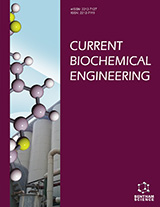Abstract
Endophytic fungi were isolated from the leaves of medicinal herb Phyllanthus sp. sourced from different areas of Pune and then screened for Trichothecin production. Out of 30 endophytic fungal cultures isolated and screened, only one AAP-PS-1 was found to produce Trichothecin extracellularly in appreciable amounts and was identified as Trichothecium sp. by morphological, cultural and molecular methods. Trichothecin, a sesquiterpene from endophytic fungus Trichothecium sp. was purified using prep TLC, RP-HPLC; quantified and completely characterised by UV-VIS, FTIR, ESI-MS, HRMS and 1D and 2D NMR techniques. One liter of Trichothecium sp. yielded 4.25 mg of Trichothecin. We screened Trichothecin for antifungal activity against filamentous fungi and yeast, apoptotic activity against B16F10 cells, anticancer activity against MDA-MB-231, HeLa and B16F10 cells as well as antimetastatic activity against MDA-MB-231 cell line. It was observed that Trichothecin inhibited MDA-MB-231 cell migration and arrested B16F10 cells at G2/M phase indicating its potential as antimetastatic and antiproliferative compound. Further, for selectivity, we checked for its cytotoxicity against mouse embryonic fibroblast (NIH3T3) and human peripheral blood mononuclear cells (PBMC) and found that it was not cytotoxic in the given concentration range of Tricothecin used against cancer cell lines. Assessment of toxicity towards human RBC revealed only less than 0.1% hemolysis as compared to Triton X-100 suggesting safe nature of Trichothecin. It was also found that Trichothecin exhibits anti-fungal activity against a range of filamentous fungi and yeast. Given its potent and selective anticancer activity, Trichothecin could be used as scaffold for chemical and biological transformations to generate analogues with better pharmacological properties.
Keywords: Endophytic fungi, Trichothecium sp., Phyllanthus sp., trichothecin, anti-proliferation, cancer cell migration.
Graphical Abstract
 35
35 1
1
















